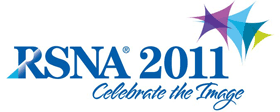
Abstract Archives of the RSNA, 2011
LL-CHS-SU2A
Dual-Energy CT in Patients Treated with Anti-Angiogenic Agent for Non-Small Cell Lung Cancer: A New Method of Monitoring Treatment?
Scientific Informal (Poster) Presentations
Presented on November 27, 2011
Presented as part of LL-CHS-SU: Chest
Yoo Na Kim, Presenter: Nothing to Disclose
Ho Yun Lee MD, Abstract Co-Author: Nothing to Disclose
Joon Beom Seo MD, PhD, Abstract Co-Author: Speaker, Siemens AG
Myung Jin Chung MD, Abstract Co-Author: Research Consultant, Samsung Electronics Co
Myung-Ju Ahn, Abstract Co-Author: Nothing to Disclose
Kyung Soo Lee MD, PhD, Abstract Co-Author: Nothing to Disclose
Keunchil Park, Abstract Co-Author: Nothing to Disclose
Chin A Yi MD, PhD, Abstract Co-Author: Nothing to Disclose
Tae Sung Kim MD, Abstract Co-Author: Nothing to Disclose
Regarding to anti-angiogenic treatment of non–small-cell lung cancer (NSCLC), intratumoral hemorrhage related to the anti-angiogenic action of the drug can lead to increase in size of the tumor and be misinterpreted to progressive disease. Recent a few studies showed the iodine component in lung nodules is measurable on iodine enhanced image of dual-energy CT (DECT) and is comparable to the real value of the degree of enhancement. Moreover, the degree of enhancement in ground glass nodule (GGN) may be measurable if using DECT technique. This study aimed to determine the clinical feasibility of DECT in the evaluation of response after anti-angiogenic therapy of NSCLC.
Eight NSCLC patients treated with bevacizumab underwent CT scans which were obtained before and 3 minutes after contrast material injection by using a scanner with a dual-energy technique. Image sets that included nonenhanced weighted average, enhanced weighted average, virtual nonenhanced, and iodine-enhanced images were reconstructed. CT numbers of NSCLCs on virtual nonenhanced and nonenhanced weighted average images were compared, and CT numbers on iodine-enhanced image and the degree of enhancement on average images (subtraction of CT number on nonenhanced weighted average image from its CT number on enhanced weighted average image) were compared by using Bland-Altman plots and intraclass correlation coefficient (ICC).
As for target lesions in 8 patients, solid nodules (n =16) and GGNs (n =2) were detected. CT numbers showed no significant difference between virtual nonenhanced and nonenhanced weighted average images and between iodine enhanced image and the degree of enhancement on average images. For solid nodules, CT numbers on virtual nonenhanced and nonenhanced weighted average images showed an ICC of 0.99 and those on iodine enhanced image and the degree of enhancement also showed an ICC of 0.999. For GGNs, the degree of enhancement could be assessed by iodine enhanced image.
Dual-energy CT may serve as useful tool for response evaluation after anti-angiogenic treatment in NSCLC, providing the degree of enhancement of solid nodules as well as GGNs without additional radiation dose.
Dual-energy CT may serve as useful tool for response evaluation after anti-angiogenic treatment in NSCLC, providing the degree of enhancement of NSCLC more accurately.
Kim, Y,
Lee, H,
Seo, J,
Chung, M,
Ahn, M,
Lee, K,
Park, K,
Yi, C,
Kim, T,
Dual-Energy CT in Patients Treated with Anti-Angiogenic Agent for Non-Small Cell Lung Cancer: A New Method of Monitoring Treatment?. Radiological Society of North America 2011 Scientific Assembly and Annual Meeting, November 26 - December 2, 2011 ,Chicago IL.
http://archive.rsna.org/2011/11011039.html

